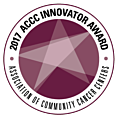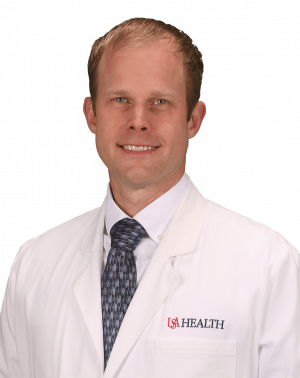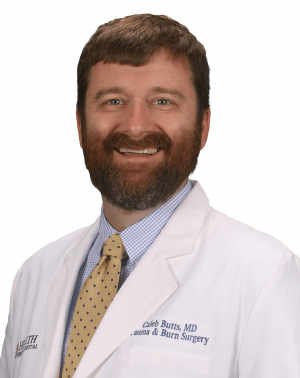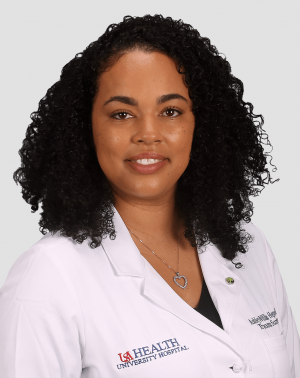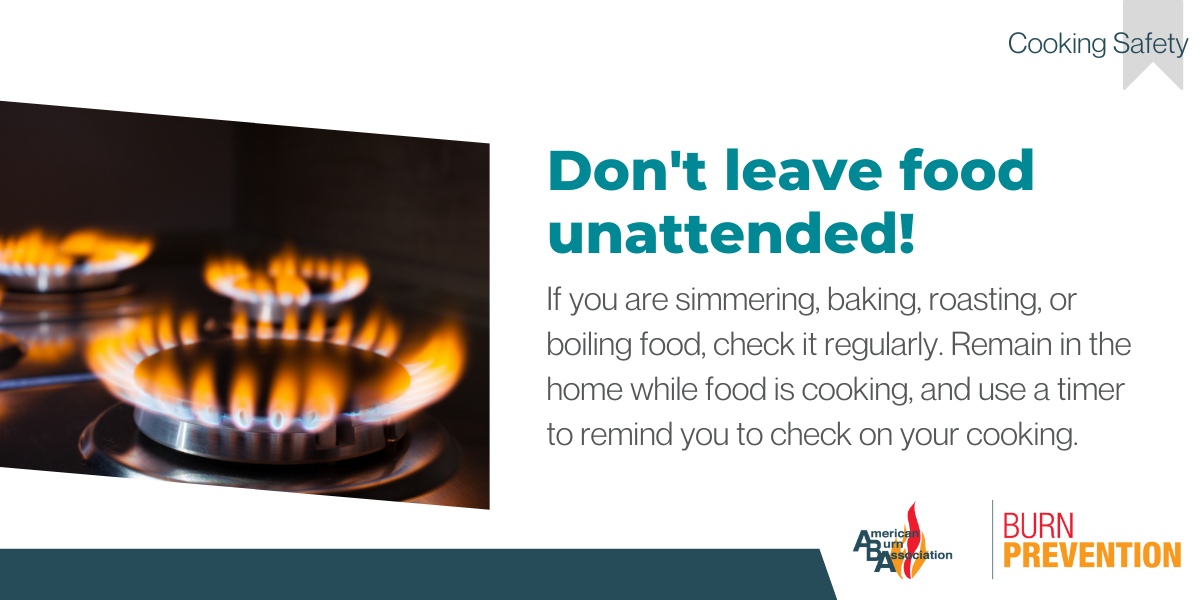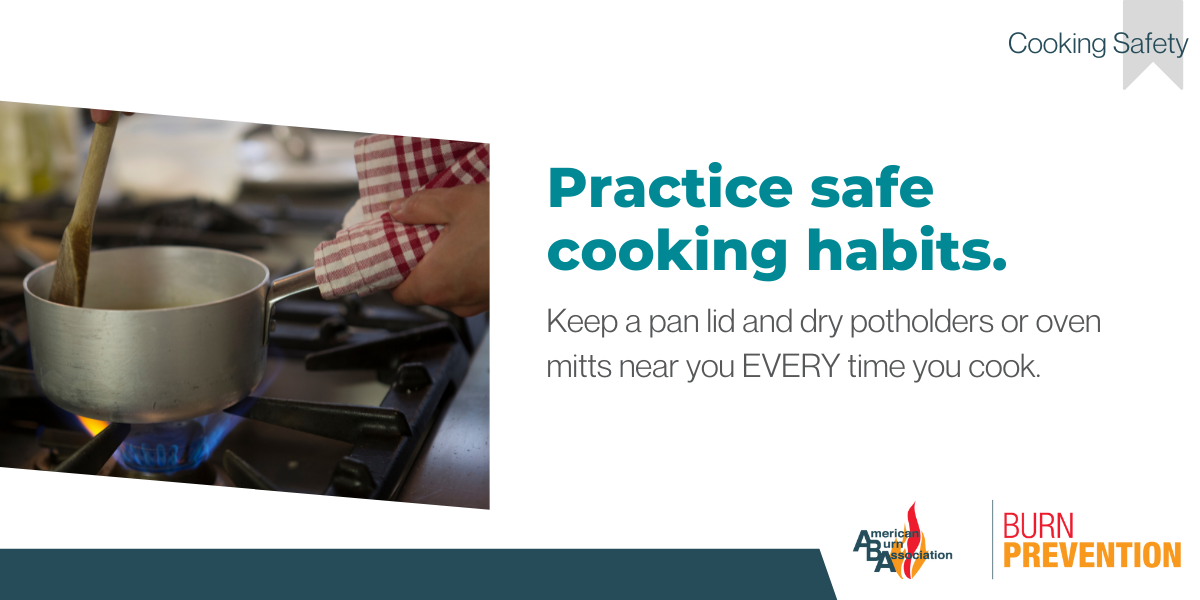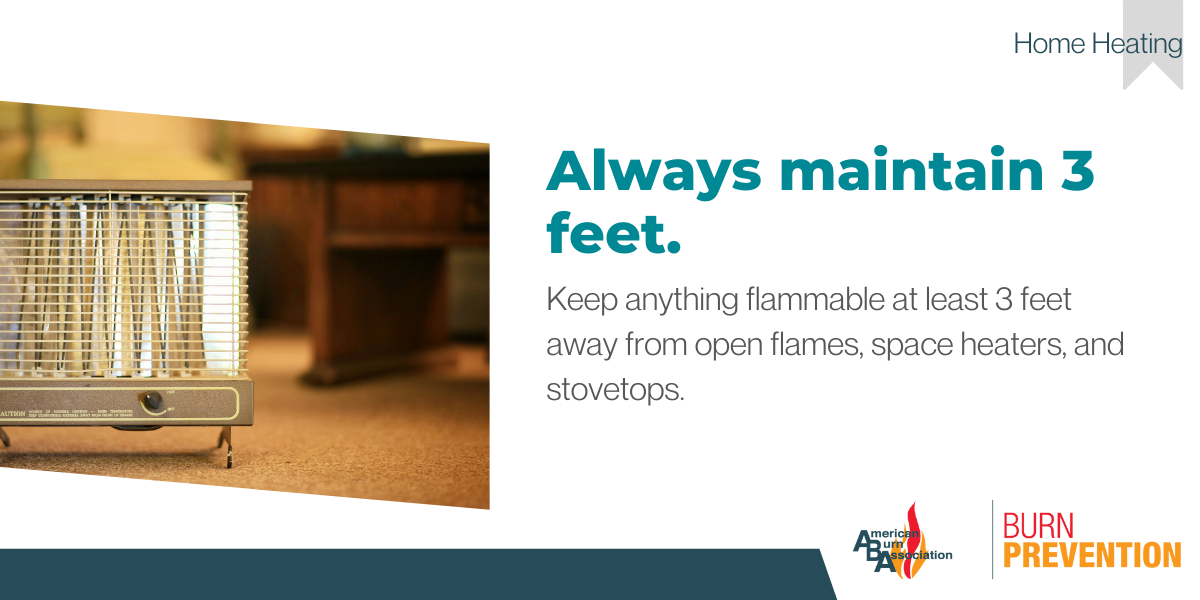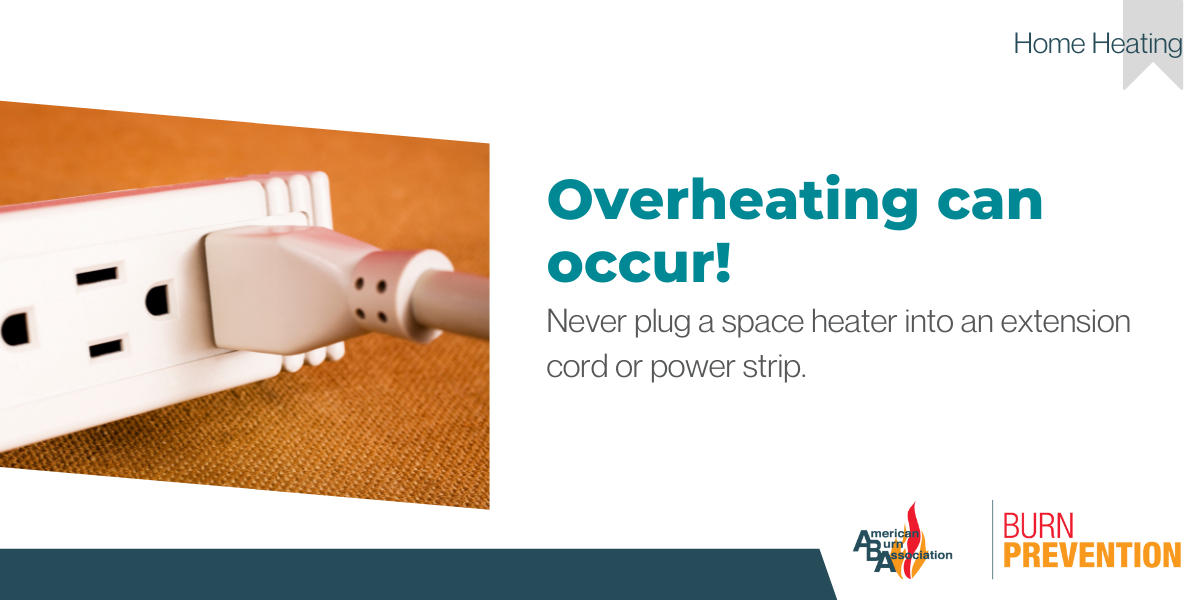Any damage to skin tissue that’s caused by sunlight, flames, hot liquids, heat, radiation or chemicals is a burn. No matter the source of the burn or the degree of damage, USA Health offers comprehensive burn care from a multidisciplinary team that includes nurses, dietitians, occupational therapists, physical therapists and nationally recognized burn surgeons.
Burn Unit
The Arnold Luterman Regional Burn Center includes a seven-bed ICU and a step-down, or intermediate care, unit with 12 beds. As the only burn center of its kind along the Gulf Coast, our specialists treat everything from mild burns to complex cases that may require an inpatient stay on our burn unit and months of follow-up therapy. Regardless of the patient’s condition, we use our expertise and innovative treatment options to provide the best possible outcomes.




